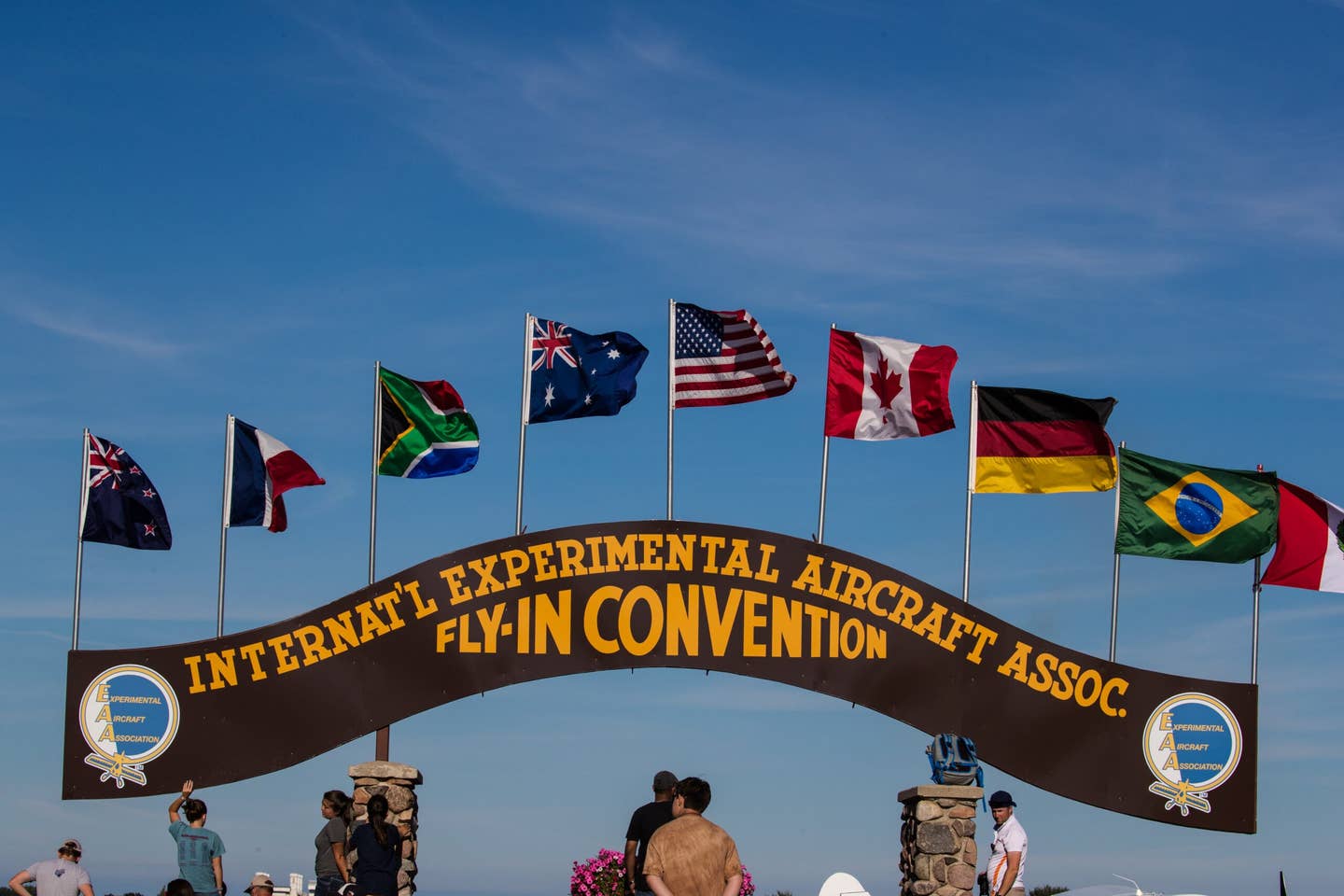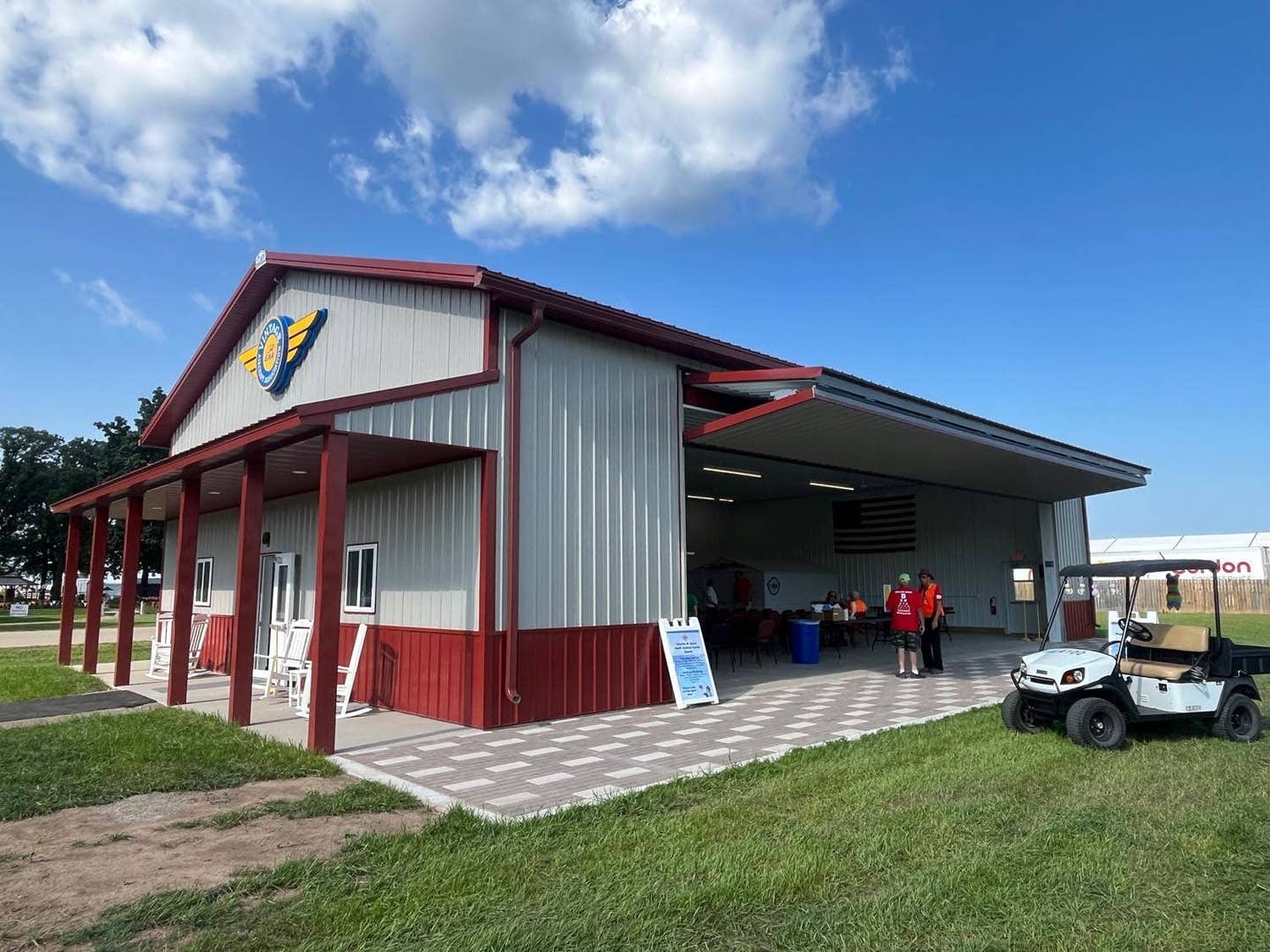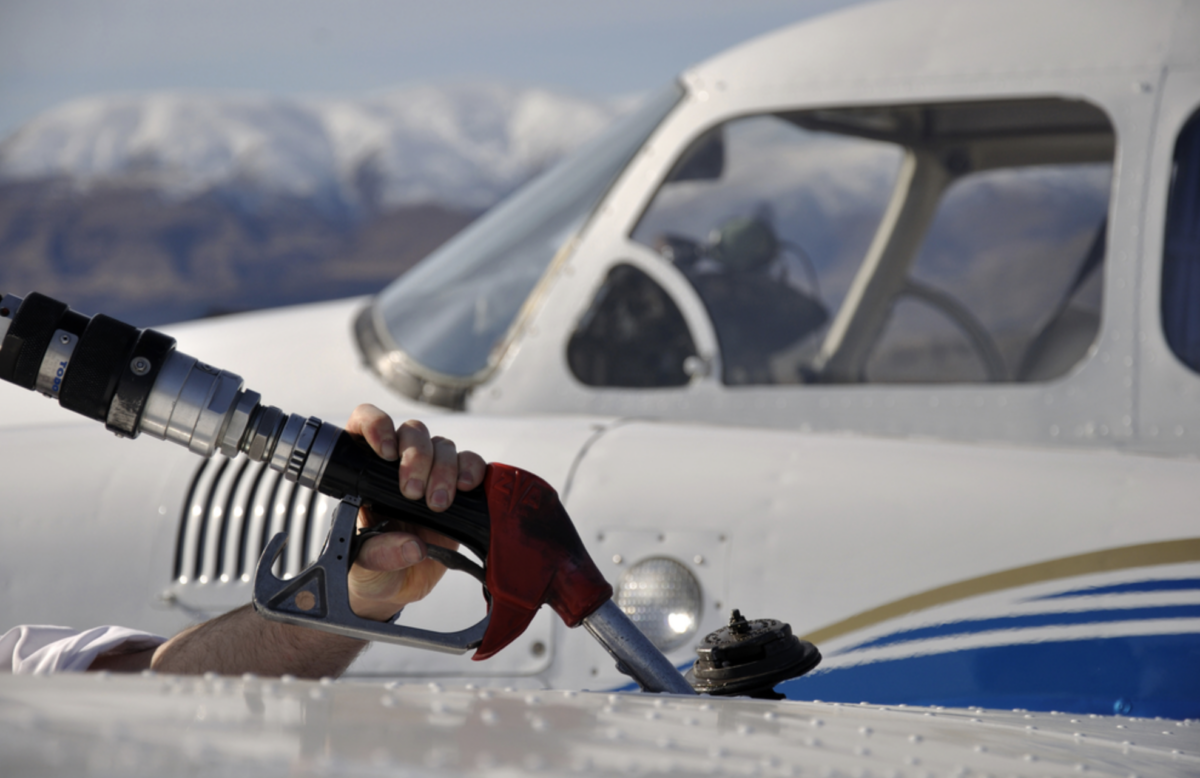How to Navigate the Warbirds at AirVenture
The most popular place at the world’s biggest aviation event deserves some pre-planning.

[Courtesy: EAA]
The Warbirds area is one of the most popular parts of EAA AirVenture, and also one of the most populated and the most dynamic. The Warbird display area is located on the north end of Oshkosh’s Wittman Field (KOSH), and it’s accessible by footpath or by tram. The aircraft are grouped by use. Usually, the fighters are parked together as are the training aircraft, the liaison birds, helicopters, jets, and larger transports and bombers.
Bill Fischer, executive director of EAA Warbirds of America, is anticipating a good turnout this year.
"Expect to see Warbirds galore, some fresh out of the restoration shop!" he says, predicting crowd favorites such as the P-51, P-38, A-26, Hellcat, Wildcat, Tigercat, ME-109, Spitfire, B-25, B-17, C-47, T-6, T-28, T-34, L-19, T-33, F-86, F-100, L-39, Mig-15, UH-1, OH-6, PBY, PT-17, O-2, and many more will be in attendance.
Plan Your Mission
You may find it helpful to take the tram tour for the 10,000-foot view. The tram is an open-air vehicle that drives around the warbird area while a knowledgeable volunteer tells you about the aircraft you are looking at. Many people take the tour, seeing all the aircraft on display, then walk around after the tour to get a closer look at a particular airplane.
"There are always a few unexpected surprises," Fischer notes, as AirVenture usually represents the largest gathering of warbird aircraft in the U.S., often with 400 (or more) showing up.
Sometimes, the aircraft are moved around during the week for logistical reasons, so you may have to hunt a bit to find your favorite airplane.
Flightline Etiquette
At the end of World War II, you could have purchased a surplus P-51 Mustang for $600 cash, but those days are gone, and I mean waayyyyyyyyyy gone—that P-51 is worth millions now. It sure doesn't belong to Uncle Sam anymore, so the argument 'my tax dollars paid for it' does not hold water if you want to get up close and personal with a P-51 now.
These aircraft are privately owned, so do not touch any part of the airframe unless given permission. There have been instances when a misguided soul stood his toddler on the wing of an aircraft, or used the horizontal stabilizer as a table to pack his gear bag. Please don't be this person.
Move carefully, be wary of any propellers, plus the pitot tube, flap, wing tips and chuck holes in the ground when admiring any of these valuable aircraft.
Learning Can Take Place
At 10 a.m. and 1 p.m., “Warbirds in Review,” an illustrated lecture, takes place on the ramp. Look for the bleachers and an aircraft parked in front of it. The person presenting is often the aircraft owner. Feel free to ask questions.
Go Back in Time
The Warbirds Living History Encampment takes visitors back to 1944, specifically, the 12th Army Air Corps. When you enter their space, expect to be greeted by the smell of canvas and leather—and persons wearing period-correct uniforms. The group has a command structure in place, and they do morning briefings and raise the flag. In the evening there is a USO show. These volunteers live on site in period-appropriate tents furnished with footlockers, bunks, and wooden folding chairs. Respect their space. They are also very knowledgeable and might be able to tell you about that WWII (or earlier/later) uniform you found in the attic.
For the Kids
AirVenture is big on youth education, and in the Warbirds area, that takes the form of flight simulators set up as the P-51 and the F4U Corsair. Fair warning: That P-51 is a slippery beast and the altitude will get away from you quickly.
Best Time to Visit
When asked if there is a best time to visit Warbirds, Fischer notes that it really depends on the mission of the visitor. If the mission is to get photographs, early morning just after sunrise is usually a good time—there is just something magical about a row of P-51s shrouded in mist.
Mornings, says Fischer, are a good time to see the aircraft on static display, because usually it's not too hot (yet) and the crowds are often lighter.
Listen as Well as Look
In addition to viewing some fascinating aircraft, part of the experience is meeting the multigenerational families who, like you, are weaving their way through the aircraft and sometimes they will share the stories of the family connection to a particular aircraft—like the P-51 grandpa (or grandma) flew, or the aircraft they helped design or build. Very often the owners of the aircraft place placards and signs around the airplane to tell its story—from its original mission to the restoration effort that made it what it is today.
Midday Rush Hour
If you want to get video of the aircraft in action, midday—when the aircraft are launched for or recovered from the airshow—is best bet, as long as you stay out of the way of the volunteers who are marshaling and escorting aircraft to and from the taxiways. As many of the aircraft are taildraggers, the pilot has limited forward visibility and must rely on their escorts—those are the people wearing international orange vests and driving scooters—to guide them. Don't make their job harder by getting in the way.
"No visit to EAA AirVenture Oshkosh would be complete without a visit to the Warbirds area. You could spend a whole day here."
Bill Fischer, executive director of EAA Warbirds of America
During the airshow, the warbird area is often off limits because of aircraft launching and returning. You can get a better view of the action in the sky at midfield on the main showgrounds.
The volunteers are what allow AirVenture to function, and that is especially true in the Warbird area. According to Fischer, there are approximately 600 volunteers in Warbirds doing everything from flying in the Warbird Review, helping park aircraft, selling merchandise in the store, handling kitchen patrol for food preparation for volunteers, operating simulators in the kids’ areas, taking part in the living history encampment (a 1940s era recreation of a base complete with period correct vehicles and music) conducting tram tours, registering pilots, performing maintenance—the list goes on and on. They wear distinctive T-shirts identifying them as Warbirds area volunteers.
Fischer notes the displays change daily as aircraft come and go, so don't be surprised if it is a little different each time you visit.
"No visit to EAA AirVenture Oshkosh would be complete without a visit to the Warbirds area," he says. "You could spend a whole day here."
And many people do.

Subscribe to Our Newsletter
Get the latest FLYING stories delivered directly to your inbox






